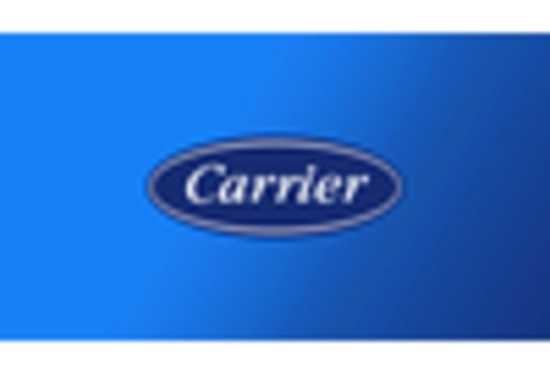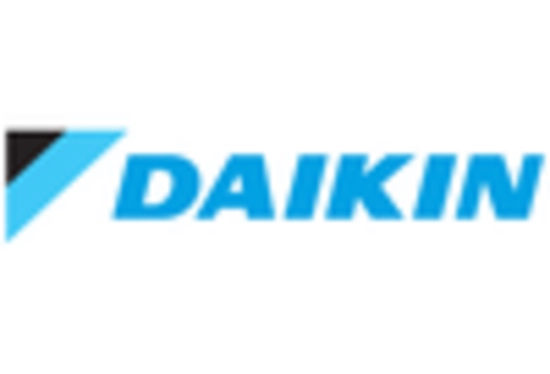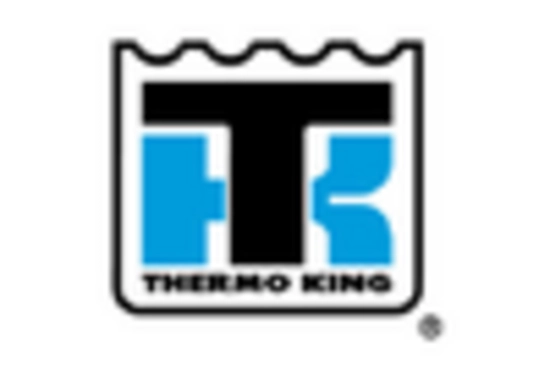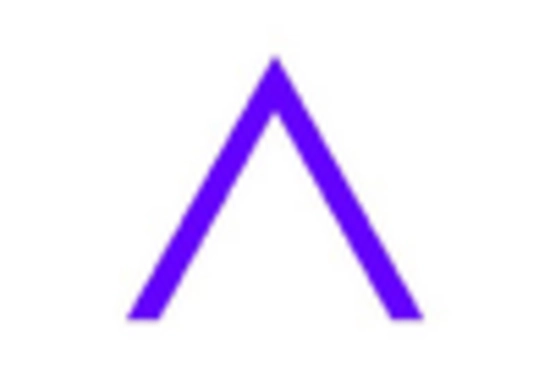Environmental Regulations
The Process Chiller Market is significantly influenced by stringent environmental regulations aimed at reducing carbon emissions and promoting energy efficiency. Governments worldwide are implementing policies that encourage the use of eco-friendly refrigerants and energy-efficient cooling systems. This regulatory landscape is pushing industries to adopt modern chillers that comply with these standards. As a result, the market is likely to see a shift towards more sustainable solutions, with a projected increase in the adoption of low-GWP refrigerants. This trend not only aligns with environmental goals but also enhances the competitiveness of companies within the Process Chiller Market.
Technological Advancements
The Process Chiller Market is experiencing a notable surge due to rapid technological advancements. Innovations in cooling technologies, such as variable speed compressors and advanced control systems, enhance energy efficiency and operational performance. The integration of IoT and smart technologies allows for real-time monitoring and predictive maintenance, reducing downtime and operational costs. According to recent data, the adoption of these technologies is projected to increase the efficiency of chillers by up to 30%, thereby driving demand in various sectors including pharmaceuticals and food processing. As industries seek to optimize their processes, the Process Chiller Market is likely to benefit significantly from these advancements.
Rising Demand in Manufacturing
The Process Chiller Market is witnessing increased demand driven by the manufacturing sector's growth. Industries such as automotive, electronics, and chemicals require precise temperature control for their production processes. The need for reliable cooling solutions to maintain product quality and enhance production efficiency is paramount. Recent statistics indicate that the manufacturing sector is expected to grow at a compound annual growth rate of 4.5% over the next five years, further propelling the demand for process chillers. This trend suggests that the Process Chiller Market will continue to expand as manufacturers invest in advanced cooling technologies to meet their operational needs.
Growth in Food and Beverage Sector
The Process Chiller Market is benefiting from the robust growth in the food and beverage sector, which relies heavily on effective cooling solutions for production and storage. As consumer demand for processed and packaged foods rises, manufacturers are investing in advanced chilling systems to ensure product safety and quality. The food and beverage industry is projected to grow at a rate of 5% annually, creating substantial opportunities for process chiller manufacturers. This growth indicates a sustained demand for efficient cooling technologies, positioning the Process Chiller Market favorably in the coming years.
Increased Focus on Energy Efficiency
The Process Chiller Market is increasingly driven by a focus on energy efficiency as businesses seek to reduce operational costs and environmental impact. Energy-efficient chillers not only lower electricity consumption but also contribute to sustainability goals. Recent studies suggest that energy-efficient chillers can reduce energy costs by up to 40% compared to traditional models. This growing awareness among industries, coupled with rising energy prices, is prompting companies to invest in modern cooling solutions. Consequently, the Process Chiller Market is likely to experience a surge in demand for energy-efficient technologies, aligning with broader trends towards sustainability.


















Leave a Comment